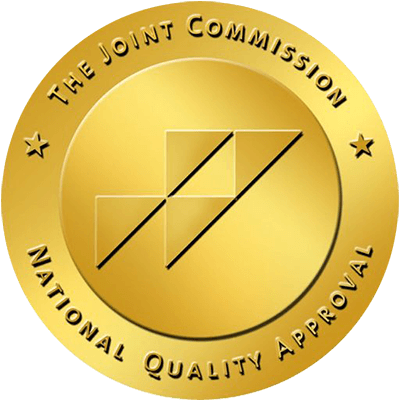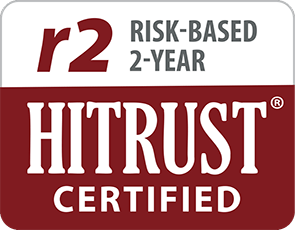Written by Ashley Kane,
Brightside Health
5 Minute Read

Medically reviewed by:
Erin O'Callaghan, PHD
Director of Therapy
10 Minute Read

Many women experience premenstrual syndrome (PMS) symptoms every month, but did you know a subset of women experience more severe symptoms due to a condition called premenstrual dysphoric disorder (PMDD)? In the weeks leading up to a person’s period, PMS may cause bloating, cramps, breast tenderness, and headaches. Those with PMDD may experience these symptoms as well as more severe mood changes including anxiety, depression, and irritability.
What is PMDD?
Premenstrual dysphoric disorder is similar to PMS but is a more serious condition that’s considered to be a mood disorder within the fields of medicine and mental health. While 70-90% of women in child-bearing age report experiencing PMS symptoms, about 3-8% of women experience symptoms that would qualify them for a diagnosis of PMDD. This is about 6 million women worldwide.
What causes premenstrual dysphoric disorder?
Research suggests that changes in hormonal and serotonin levels may play a role in the development of PMDD symptoms. As the Cleveland Clinic explains:
Decreasing levels of estrogen and progesterone hormones after ovulation and before menstruation may trigger symptoms. Serotonin, a brain chemical that regulates mood, hunger and sleep, may also play a role. Serotonin levels, like hormone levels, change throughout your menstrual cycle.
PMDD vs. PMS symptoms
Symptoms of PMDD and PMS usually occur in the days leading up to a women’s period and resolve a few days after menstruation begins.
PMS symptoms include:
- Swollen or tender breasts
- Constipation or diarrhea
- Bloating
- Cramping
- Headache or muscle aches
- Clumsiness
- Lower tolerance for noise or light
- Irritability
- Feeling tired
- Sleeping problems
- Appetite changes
- Trouble with concentration or memory
- Tension or anxiety
- Depression, feelings of sadness, or crying spells
- Mood swings
- Less interest in sex
PMDD symptoms include the symptoms mentioned above, and may also include:
- Anger or irritability
- Feelings of sadness or despair, or thoughts of suicide
- Severe feelings of anxiety
- Panic attacks
- Loss of interest in usual activities and relationships
- Feeling out of control
Though more people are gaining awareness of PMDD, many women may not know to speak to a mental health professional or doctor about their symptoms. If you are experiencing severe symptoms like the ones above, talk to a provider as treatment is available.
If you’re in emotional distress, text HOME to 741-741 to connect with a Crisis Text Line counselor immediately. If you are experiencing an emergency, call 911.
How is PMDD diagnosed?
Your provider will ask you questions about your medical history and your symptoms. They’ll also listen to your concerns and answer any questions that you have.
As part of a diagnosis, you may be asked to track your symptoms over time. Because PMDD symptoms appear and subside on a monthly basis, this is important for a diagnosis. Your provider will then evaluate your symptoms and consider whether you may be experiencing PMDD or another anxiety or depression-related condition.
Treatment for PMDD
PMDD is treatable, so talk to a healthcare provider so you can start feeling like yourself again and enjoy life more fully. Here are a few treatment options that can be adhered to alone, or in combination for a better chance of symptom relief.
- Therapy
Your therapist can support you every step of the way. They can work with you on adaptive skills to help you cope and manage PMDD symptoms. This can include goal-setting, stress management, and techniques to lessen anxiety and depression. Taking part in an evidence-based therapy program is a good idea as it follows proven principles to help you feel better.
At Brightside Health, our therapists follow the evidence-based Unified Protocol, a modern enhancement of cognitive-behavioral therapy (CBT). Through therapy, you can better understand how your thoughts, feelings, and behaviors relate to your mental health concerns so you can approach them more effectively.
- Medication
Your psychiatric provider can find the right medication to treat your unique PMDD symptoms. Antidepressants such as selective serotonin reuptake inhibitors (SSRIs) affect serotonin levels in the brain, which can help treat your symptoms. With Brightside, you can get medication delivered to your door monthly. The Food and Drug Administration (FDA) has approved three medications to treat PMDD:
Like treatment for PMS, over-the-counter pain relievers such as ibuprofen and aspirin, and birth control may also help relieve symptoms.
- Lifestyle changes
Depending on your current lifestyle, some changes may also help improve your symptoms of PMDD. Eating nutritious food, practicing self-care, and getting exercise can help reduce the negative impact of your symptoms. However, PMDD is a serious condition so it’s important to talk to a provider to discuss additional treatment options.
In summary
Premenstrual dysphoric disorder is a condition that involves heightened PMS symptoms as well as more severe symptoms including depression and anxiety in the days and weeks leading up to one’s period. The symptoms usually subside in the days after menstruation.
If you have experienced any of the symptoms above, reach out for support. As Robert L. Reid, MD FRCS states in one text in the National Library of Medicine, “All too often their [women’s] concerns have been dismissed as “a normal part of being a woman” and therapy has been denied.” Fortunately, more people are aware of the seriousness of PMDD and many treatment options exist today.
PMDD is treatable with a combination of medication, therapy, and lifestyle changes. At Brightside, therapists and psychiatric providers treat PMDD online so you can get care from the comfort of home. Within 12 weeks, 86% of Brightside members experience significant improvement and 71% achieve remission of their symptoms altogether.
To get started, take a free assessment today.













